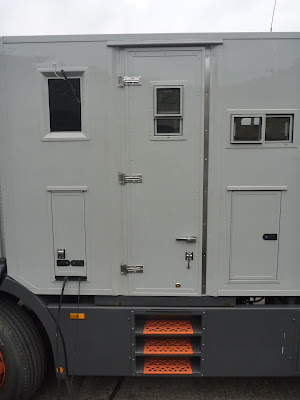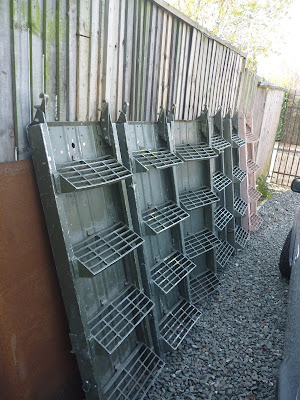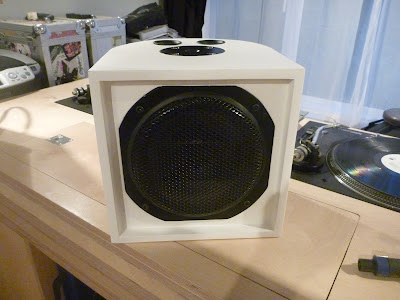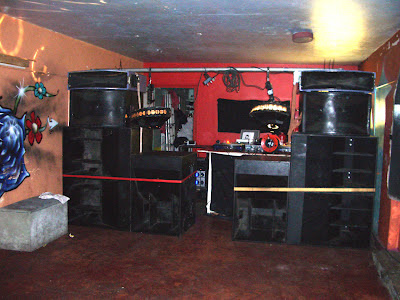Dogs are generally awesome, and mine is certainly no exception. Boris (our golden retriever) makes a great tofu stir fry, and can recall Pi to 47 decimal places, but sadly one of the things Boris cannot do is climb ladders.
The first time this became a problem was when I was visiting a friend on his boat at low tide; the gangway was too steep and Boris flatly refused to lose his dignity trying to descend it. On this occasion Boris retired to the car whilst I demonstrated my agility to him.
More recently I noticed that Boris's ladder issue would become a problem when we started travelling in Jim, as the only easy access is via the nearside door in the box body, entered using steps recessed into the side guard.
I've often laughed at the array of bulky and expensive solutions many motorhomes and traveller vehicles use to make entering the vehicle easier -
electric steps that mean you have to lift your foot 4cm less when getting into a van, huge wooden ladders strapped to the bumper when travelling. Of course there are also many elegant solutions, such as steps that fold away into the bodywork, or entry doors that fold downwards to form a staircase, but these seem to be limited to manufacturers of expensive overland trucks .
I'd previously not given the entry of the truck much thought. The steps in the body work are easy to use for a biped with opposing thumbs, but realising that I needed to make a dog friendly solution I started looking around for a cheap and effective solution that worked well when parked but also didn't pose a headache when travelling.
Having spent many occasions lusting after old army trucks in the past, I had seen the UK MOD communications body trucks with their well built aluminium steps fixed to the back. The steps looked tough enough for a life on the road, and if they don't fly off and kill someone when the army are throwing their vehicles around off-road, I was sure they'd be fine on Jim. The steps are made from pressed and cast aluminium components (thus fairly light) and have adjustable legs that allow them to be used on various vehicles and on non level ground, perfect. With this in mind, and having waited many years for a valid excuse, I went up to the next Witham Specialist Vehicle Tender. For those not afflicted with incurable mechanophilia (sadly I didn't make that term up!), you may not have come across Witham, but for people like me, it is the equivalent of Mecca. Witham have the sole right to sell every vehicle disposed of by the armed forces in the UK, and consequently the place is rammed full of vehicles that leave me weak at the knees.

Witham aren't in the business of selling small cheap items, and so the only way of buying a set of the aluminium steps was to bid on a lot of 8. I don't suppose there is much demand for these steps if they don't come attached to a truck, and so I won the lot. Some of them were irreparably mangled, some of them needed a of tweaking, and a few were practically unused.
I kept a pair of good ones for myself and sold some of the rest, covering most of the cost of buying them and picking them up. I've got three pairs needing a bit of work left; if anyone want them, you can have them for a bottle or two of something tasty.
Unfortunately, this was the easy bit over.













